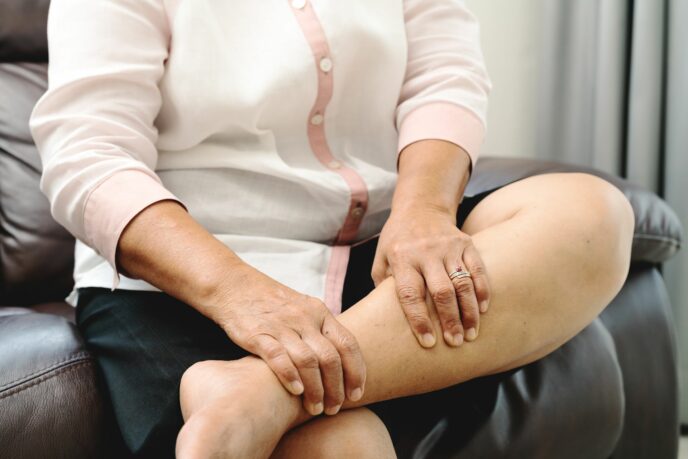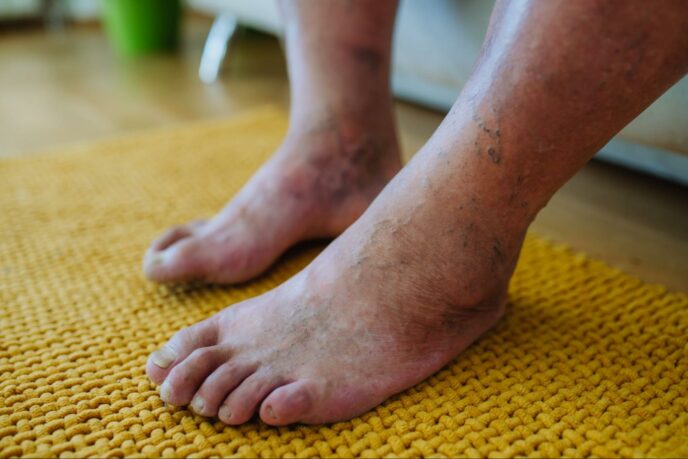
Numbness in Feet
Poor blood flow to the feet can result in a number of problems, including numbness, tingling, and blue toe syndrome. But what is it that causes poor blood flow? Dr. Abadir shared his advice on this recently.
What causes numbness and tingling in the feet?
Anything that affects the nerves going down the legs and into the feet can cause numbness and tingling in the feet. There may be a mechanical cause such as compression of the nerve, either in the spine or further down in the leg. Neurologic disorders may also affect the nerves, as can a lack of blood supply to the legs. Where there is a lack of blood supply, the nerves don’t have enough energy to transmit their information properly. This results in numbness or abnormal function of the nerves, which manifests as a tingling sensation.
When should a patient be worried about numbness and tingling?
Everybody can experience numbness or tingling. Sometimes when you sit the wrong way and have pressure on the back of your legs for a long time you will experience tingling or numbness. However, if you have numbness in the leg that persists over days, experience a cold sensation in your legs, or notice a temperature difference from one leg to the other, that is more worrisome, and may indicate that something underlying is going on. If this is the case, you should be evaluated by a physician. While it may indicate a need for something as simple as changing your stockings or compression, there are other diseases such as diabetes or peripheral vascular disease that may be causing these symptoms, and these should be evaluated and treated accordingly.
Should a patient worry about blue toe syndrome?
A blue toe is a situation where one or more of the toes seem colder than others, or may appear discolored, either bluish or even reddened, and is often associated with a significant amount of pain. A variety of diseases can cause this, such as diseases where the arteries are abnormally narrow, called vasospasm. Something that is more worrisome is a condition called atherosclerosis, where plaque builds up in your arteries. This causes blue toe syndrome when little particles from the plaque break-off, flow downstream, and block up the small arteries in your toes. This results in your toe not receiving enough blood, food, and oxygen. The toe turns blue because it doesn’t have enough oxygen, and the pain is caused because it is not receiving all the other nutrients and the oxygen it needs. If you have an unstable plaque in your legs, it is very important to have this evaluated and taken care of, because if more plaque develops and breaks off, you can have symptoms in more toes. Left untreated, the artery could completely close up in the leg, meaning your foot could be at risk and need emergency procedures to take care of it.
What causes blue toe syndrome?
Blue toe syndrome is a sign that the blood flow to that toe has been blocked off. One of the most common reasons this occurs is atherosclerosis in your arteries and irregular plaque, which is a collection of calcium and other materials in the wall of the arteries. When the plaque breaks open, it exposes cholesterol crystals and other materials in the plaque to the blood flow, carrying them downstream and blocking off the supply to your toe. While the toe is not essential, vulnerable plaque are shedding particles down into the feet, which is a sign of a dangerous situation and needs to be addressed quickly before things progress.
Why does Peripheral Artery Disease make it difficult or painful to walk?
Peripheral vascular disease is a condition where there is a narrowing of the arteries by atherosclerosis and plaque build-up. The arteries are the system by which the body delivers blood to the legs and other parts of the body, providing food and oxygen to the tissues. When walking, your muscles require more food and oxygen than they usually need because they are actively working. If the arteries are narrowed, then the body cannot supply the food and oxygen that the muscles require. This starves the muscles, causing a sensation of pain and cramping because they can’t function without the materials that they need.
Related Blogs & Videos
Learn more about vascular health, prevention, and care for Peripheral Artery Disease.




